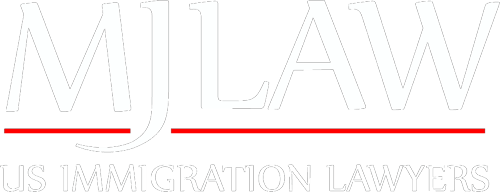Think immigration is bad for the American worker? Think again.

photo credit: immigrationdirect.com
As Congress attempts to overhaul our current immigration scheme, many in Silicon Valley and elsewhere implore policymakers to carefully consider how changes to the H-1B visa category, and other employment visa categories, will impact the United States’ ability to attract and retain STEM workers. “STEM” refers to highly skilled workers with expertise in science, technology, engineering, and math. The United States, particularly Silicon Valley and similar tech hubs, needs lots of STEM workers to fill an ever-growing demand. However, the US does produce enough American-born STEM workers to meet this demand. This is why we need foreign-born STEM workers. The lack of American-born STEM workers also explains why immigration is not adverse to the American worker; foreign-born STEM workers are not displacing American workers, but rather filling positions for which there are no available American workers. As described by former US Treasurer Rosario Marin, “[u]ntil America can educate enough graduates in these fields to meet the demand, legal immigration is the only option to find necessary talent.” In her article for the Wall Street Journal, Marin also cited a McKinsey & Co. figure, which predicted that by 2020 about 1.5 million jobs will remain vacant in the STEM fields unless the immigration system is overhauled to allow more STEM workers into the country.
For purposes of understanding the STEM worker immigration process, it is helpful to have some background on the H-1B visa category. The H-1B visa is for persons working in occupations (like science, technology, engineering, and math) that require theoretical and practical application of a highly specialized body of knowledge. In addition, H-1B applicants must either: be licensed by the state if such a license is required to engage in the occupation, have a bachelor’s degree or higher in the relevant specialty, or have experience that is equivalent to a bachelor’s degree.
Furthermore, employers petitioning for an H-1B worker must attest to the US Department of Labor that the position meets certain requirements. Namely, the employer must declare that the wages to be paid will be equal to or exceed the prevailing wage for the occupation or the employer, that the position will not negatively affect similarly situated US workers, and that there is no current labor dispute at the place of employment. If H-1B workers comprise more that 15 percent of an employer’s workforce, the employer must also certify that foreign-born workers will not supplant US workers at the employer’s business, or be placed with another employer in a position that would supplant a US worker.
The current statutory limit for H-1B visas is 65,000 per year. Applications for H-1B visas far exceed the statutory cap each year. For fiscal year 2014, the US received 124,000 H-1B applications and the cap was reached during the first week of the filing period, which ended on April 5, 2013. The H-1B application is becoming increasingly expensive to file, with current fees amounting to around $2000 per application. Under proposed legislative changes to the category, this fee could quintuple. A low cap and rising fees make it immensely difficult for US employers to hire necessary amounts of foreign-born scientists, technology professionals, engineers, and mathematicians.
Consider the following statistics describing supply and demand dynamics for STEM workers in the US:
From the U.S. Department of Commerce:
-Over the past ten years, growth in STEM jobs was triple that of growth in non-STEM jobs.
-STEM occupations are projected to grow by 17 percent from 2008 to 2018, compared to around 10 percent for non-STEM occupations.
From the Silicon Valley Leadership Group:
-According to the U.S. Bureau of Labor Statistics, there are tens of thousands of unfilled STEM jobs.
-IBM, Intel, Microsoft, and Oracle alone have 10,000 unfilled STEM openings in the United States.
From the Brookings Institution:
-In the average large metro area, 30 percent of job openings are in STEM fields, but only 11 percent of area residents have a STEM degree.
-In 2010, there were seven job openings in computer occupations for every relevant computer major graduate; six health care openings for each health practitioner graduate; and four engineering openings for each engineer.
From NORFACE Migration:
-In a study tracking job and wage growth in 219 U.S. cities from 1990 to 2010, researchers found that H-1B driven increases in foreign-born STEM workers (in any given city) were linked to statistically significant increases in wages paid to both STEM and non-STEM college educated American-born workers.
Given the above statistics, a lack of immigration, especially immigration of STEM workers, could be disastrous for the American consumer, American economy, and American competitiveness. As the immigration process for STEM workers becomes more difficult and expensive, businesses will be forced to pass these costs to consumers in the form of increased service fees. An economy without sufficient amounts of STEM workers cannot innovate to solve some of society’s most pressing concerns. Moreover, if the United States does not hire these STEM workers, other countries will and will reap the benefits that these foreign-born, US-educated workers have to offer.


